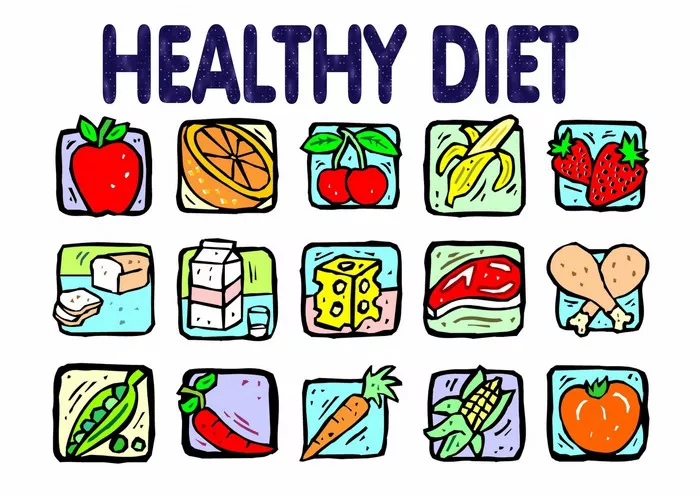In the hustle and bustle of daily life, it’s easy to overlook the significance of a well-balanced and nutritious lunch. However, this midday meal plays a crucial role in sustaining energy levels, enhancing productivity, and promoting overall health. In this professional guide, we will explore the essential components that make a lunch truly nutritious, offering insights into the importance of each element for a wholesome and satisfying midday repast.
Understanding the Foundations of a Nutritious Lunch
A nutritious lunch is not just a matter of consuming calories; it’s about nourishing the body with a combination of macronutrients, micronutrients, and other essential components that contribute to overall well-being. This understanding forms the foundation for creating meals that not only satiate hunger but also provide a spectrum of health benefits.
Proteins:
Proteins are the building blocks of life and are integral to any nutritious lunch. They play a vital role in muscle development, immune function, and the production of enzymes and hormones. Incorporating lean protein sources into your midday meal is essential for sustained energy and optimal health.
Whether you opt for grilled chicken, tofu, legumes, or fish, ensuring a protein-rich component in your lunch can contribute to a feeling of fullness and prevent energy crashes later in the day. This macronutrient is also crucial for maintaining and repairing tissues, making it indispensable for overall health.
Whole Grains:
Whole grains are a key element in crafting a nutritious lunch that provides sustained energy throughout the afternoon. Unlike refined grains, whole grains such as brown rice, quinoa, and whole wheat bread contain fiber, vitamins, and minerals that contribute to digestive health and regulate blood sugar levels.
Incorporating whole grains into your lunch not only promotes a feeling of satiety but also supports cardiovascular health and helps manage weight. The complex carbohydrates found in whole grains release energy slowly, preventing the sudden spikes and crashes associated with processed carbohydrates.
Vegetables:
No nutritious lunch is complete without a generous serving of vegetables. Packed with essential vitamins, minerals, and antioxidants, vegetables contribute to overall health and well-being. The diverse array of colors in vegetables signifies a range of nutrients, each with its unique benefits.
Leafy greens like spinach and kale provide an abundance of vitamins A and K, while colorful vegetables such as bell peppers and carrots offer a rich source of antioxidants like beta-carotene. Including a variety of vegetables in your lunch not only enhances the visual appeal of your plate but also ensures a broad spectrum of nutrients for optimal health.
Healthy Fats:
While the term “fat” may carry a negative connotation, healthy fats are a vital component of a nutritious lunch. Fats are essential for nutrient absorption, brain function, and the production of hormones. Including sources of healthy fats, such as avocados, nuts, seeds, and olive oil, can enhance the flavor and satiety of your midday meal.
Opting for unsaturated fats, particularly omega-3 fatty acids found in fatty fish like salmon and walnuts, contributes to heart health and supports cognitive function. Striking a balance between different types of fats is key to achieving a well-rounded and nutritious lunch.
Hydration:
While not a direct food component, hydration is a critical aspect of a nutritious lunch. Water is essential for digestion, nutrient absorption, and the regulation of body temperature. Often, dehydration can be mistaken for hunger, leading to unnecessary snacking.
Incorporating water-rich foods, such as fruits and vegetables, into your lunch can contribute to overall hydration. Additionally, having a glass of water with your meal ensures that you stay adequately hydrated throughout the day. Choosing water over sugary beverages aligns with the goal of crafting a lunch that supports both short-term satisfaction and long-term health.
Portion Control:
Beyond the specific components, maintaining proper portion control is a fundamental aspect of a nutritious lunch. Consuming appropriate portions ensures that you receive the necessary nutrients without overloading the body with excess calories. This practice is especially crucial in a culture where oversized portions have become the norm.
Understanding your individual nutritional needs and adjusting portion sizes accordingly is a mindful approach to lunch. Balancing proteins, carbohydrates, fats, and vegetables in appropriate proportions contributes to a well-rounded and satisfying meal that supports overall health and fitness goals.
Meal Planning and Preparation:
Consistency is key when it comes to maintaining a nutritious lunch routine. Meal planning and preparation enable you to make thoughtful choices, control ingredients, and avoid the temptations of less nutritious options. Planning your lunches for the week not only saves time but also ensures that you have access to wholesome meals, even on busy days.
Consider dedicating a specific day each week to plan and prepare your lunches. This can involve prepping ingredients, batch-cooking proteins, and assembling meals in advance. Having nutritious options readily available reduces the likelihood of resorting to convenient yet less healthy choices during hectic moments.
Addressing Dietary Preferences and Restrictions
Crafting a nutritious lunch is a personalized endeavor that takes into account individual dietary preferences and restrictions. Whether you follow a vegetarian, vegan, gluten-free, or other specialized diet, there are ample options to create a lunch that meets your nutritional needs and aligns with your culinary preferences.
Experimenting with diverse recipes, exploring alternative protein sources, and incorporating a variety of fruits and vegetables allow you to tailor your lunch to your specific dietary requirements. Embracing this flexibility not only enhances the enjoyment of your meals but also ensures that you receive a broad spectrum of nutrients.
Conclusion
In the quest for a nutritious lunch, each element plays a vital role in creating a meal that nourishes the body and satisfies the palate. From the foundational proteins and whole grains to the vibrant array of vegetables and healthy fats, every component contributes to overall health and well-being.























